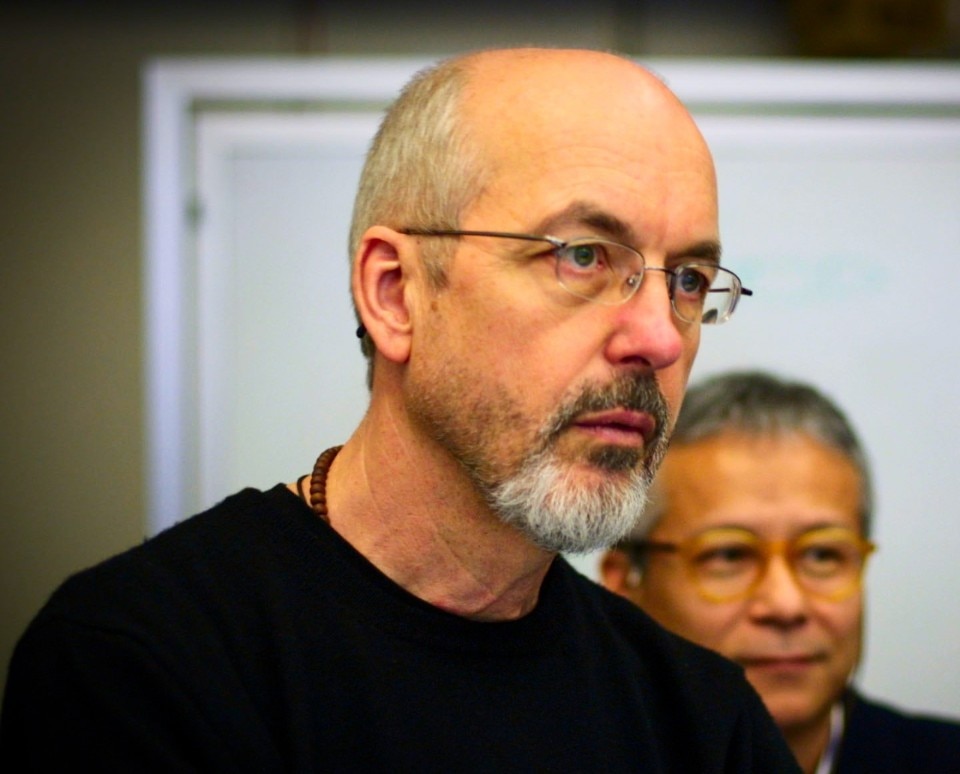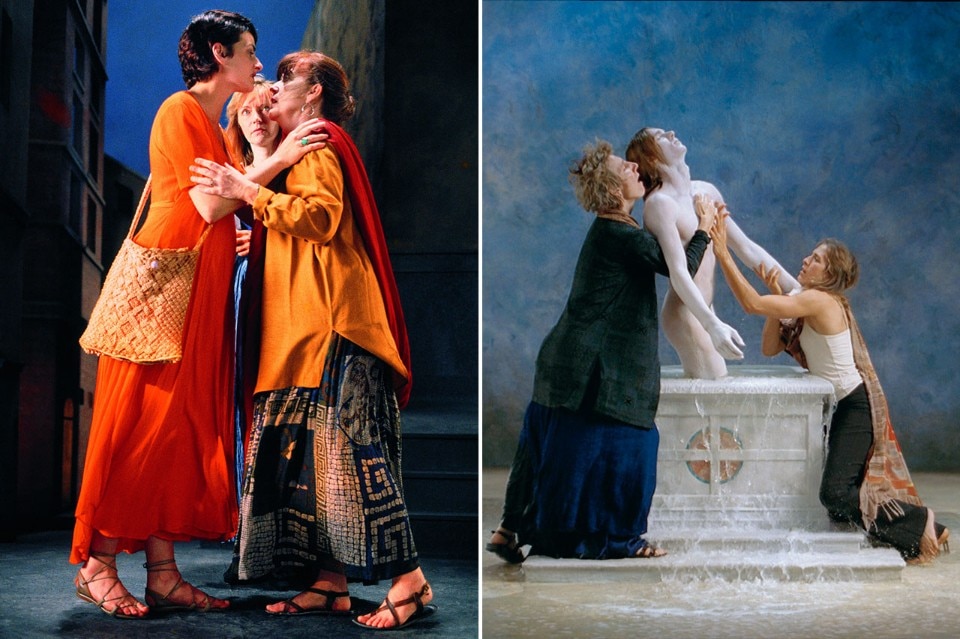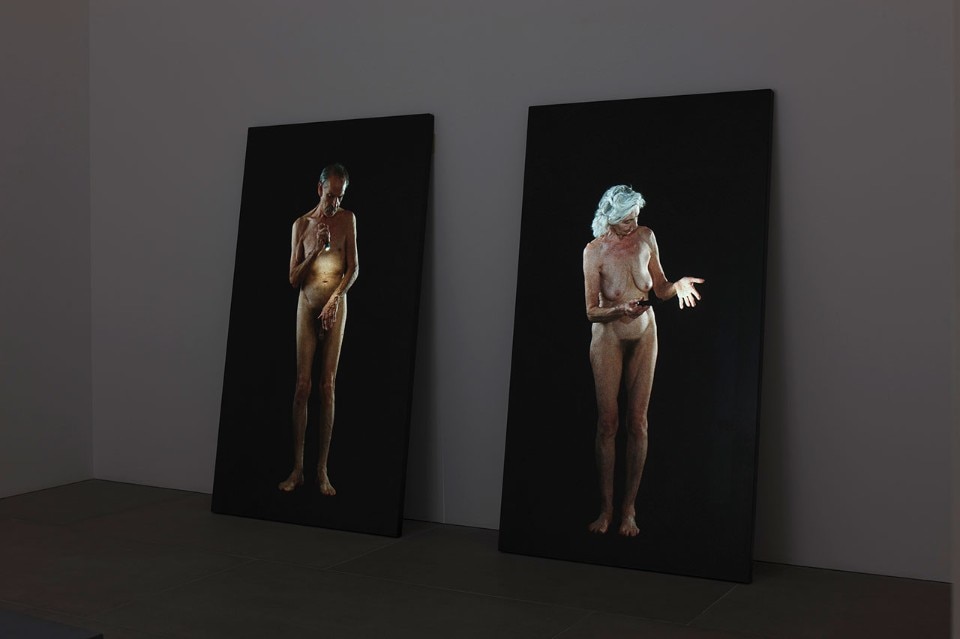Feelings, identification, the centrality of working on space and time to explore and share them. In that performative and experimental expression that he accepted by dint of being called video art – with which the whole world associated him – Bill Viola in his six-decade career has made personal and collective worlds collide, the contemporary with history: his Florentine experience, which began in the mid-1970s, had made him resonate with the Renaissance and Mannerism, with Pontormo and Paolo Uccello; forty years later, in 2017, he had returned to Florence with an exhibition, Bill Viola.Electronic Renaissance, an occasion on which he had retraced, together with Domus, the stages and the present of a path that had made him an international master, but which he continued to follow as an experimenter.
Bill Viola’s work forces spectators to take a big step back from the syncopated and convulsive rhythm of modern life. As you look at his works, your breathing gradually slows and deepens offering a chance to detach from the ever-present stimuli we are constantly subjected to and rediscover our concentration and contact with ourselves. It is a process bringing new awareness and re-educating us to listen, a form of meditation almost.
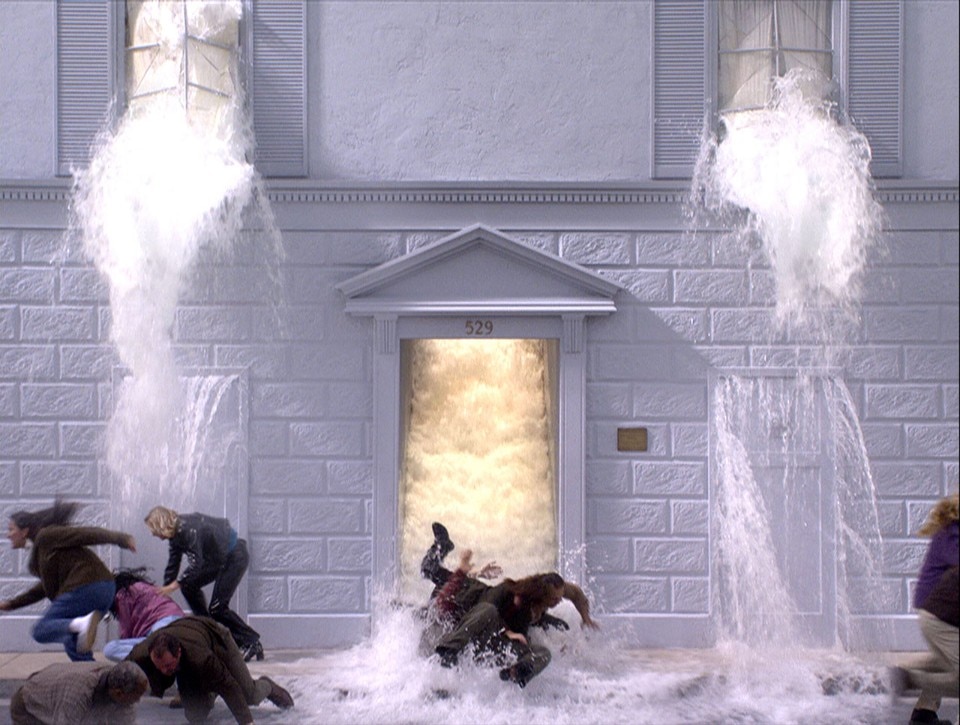
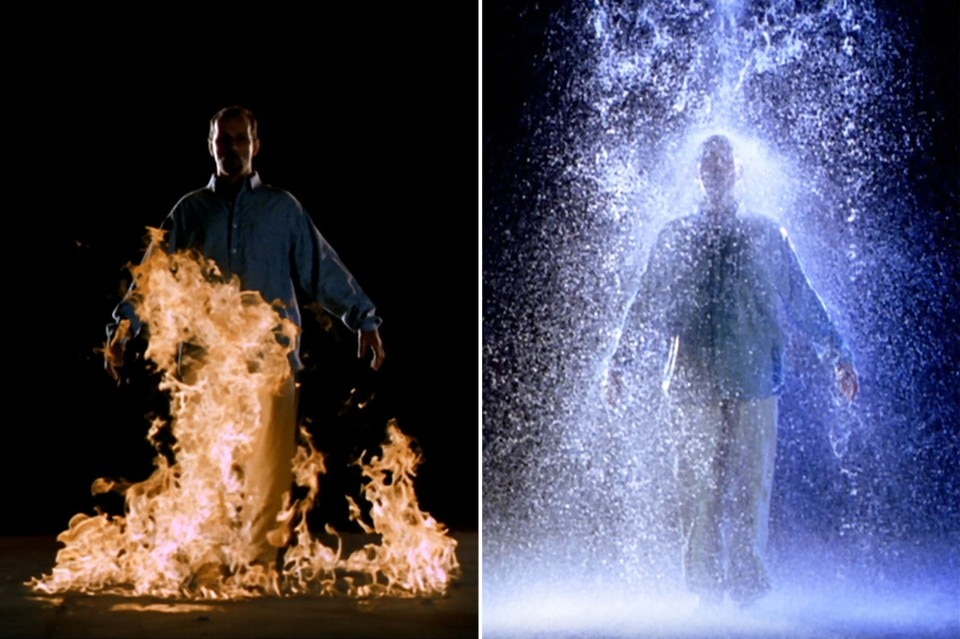
Beatrice Zamponi: In your works, time is not that marked by clocks but an inner dimension, made of sensations, memories and experiences that differ for each human being.
Bill Viola: Time is a tool that I manipulate, I speed it up or expand it. People ask me why I use slow motion but slowing things down takes you into another dimension; no longer in our world, you find yourself in a totally different position. You see a smile gradually becoming bigger and bigger; you can extend that emotion and prolong it. Finding myself so close to Masolino’s Pietà, which is in the exhibition, enabled me to observe how finely the eyes were painted and it has allowed me to grasp all the sentimental nuances, the mix of resignation and compassion. In Emergence, which dialogues with the fresco, I used time slowly to allow the emotions to be revealed; it was like letting the onlooker enter it and, also in this case, look at the work very close up.
You focus on sentiments and emotions, lending renewed dignity to the body and its feelings.
My work must not be understood rationally. You have to let something else, something physical, be triggered. The works must be felt and experienced, with an emotional connection.
Your work addresses philosophical and existential issues and your references range from Christian mysticism to Islamic Sufism, passing via Zen Buddhism and Haiku poetry.
Zeami, one of the greatest thinkers of all time and theorist of the Japanese Noh theatre told actors how to reach the point at which eagles exploit air currents to stop in the wind and cease flapping their wings while remaining still and in equilibrium. These are the teachings I search for and that lead you to create art, enabling you.
In the years spent in Florence, you had an opportunity to see ancient art not isolated in sterile white cubes but immersed in the context for which it was originally conceived. Has this impacted on your research into space?
Here in Florence art is all over the place; it lives in the community, in public places, in the squares and streets, becoming therapeutic. It’s as if the buildings were taking care of you. Art is a tool that must be used and experienced. Observing this organic process has been crucial in defining my environmental research.
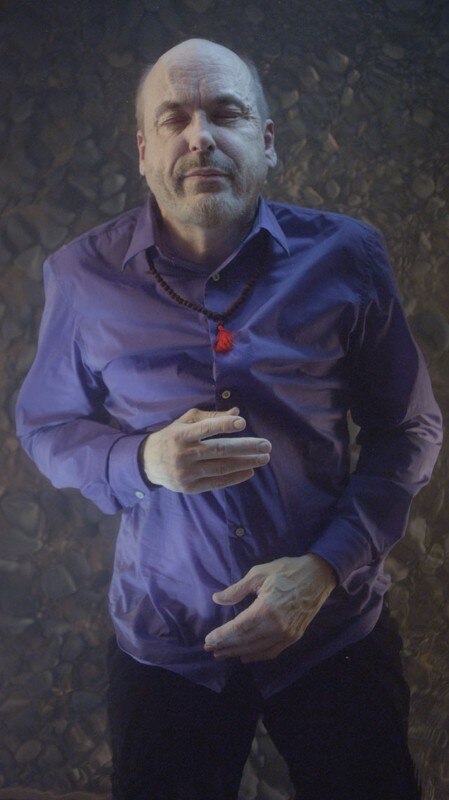
At the time, you were doing much experimentation into sound, discovering that acoustic architecture exists.
I was hugely interested in the sound in churches. I spent hours recording it. By listening to the sound of an object falling and the echo of a whispered word, I realised that every single noise contributed to the definition and perception of an entire space. When we arrived for the exhibition, the day before the opening, our technician who had come specially from Germany literally measured every sound in every room. The work would never have been complete without this complex work of harmonisation.
Your research is closely linked to technology and its development. What is the significance of creating something with a tool that, on the one hand, will very quickly become obsolete and, on the other, is almost live matter constantly evolving?
Constantly updating video media is like transferring DNA from one generation to the next. It means there will never be a risk of deterioration and that the work lives forever.
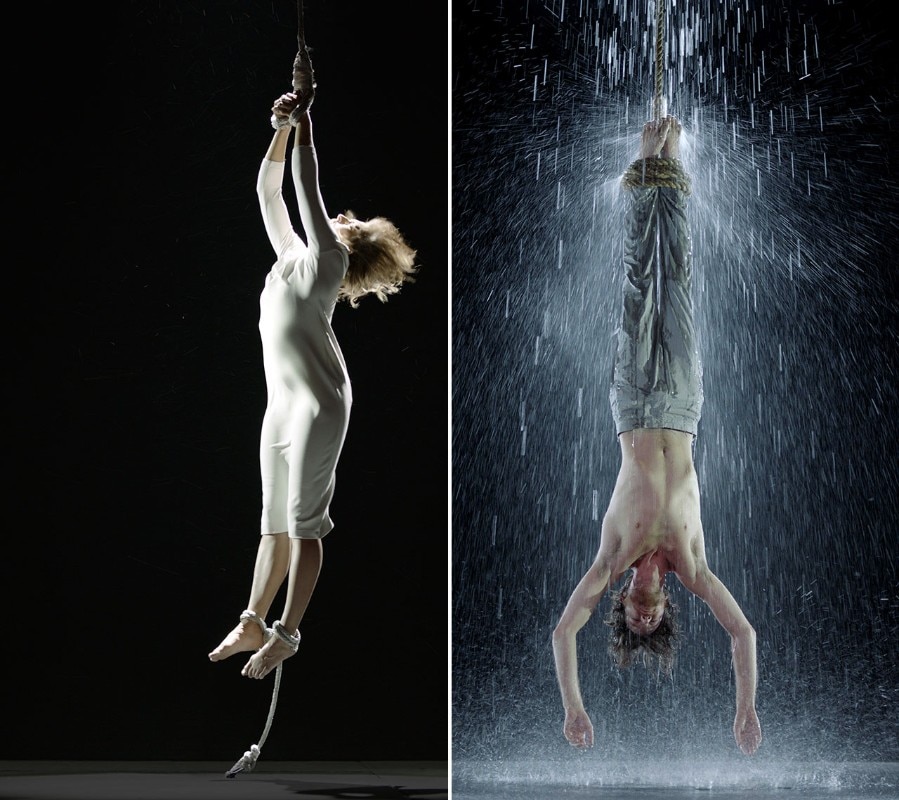
You had an accident as a child when you fell into a lake. People say this shocking experience has impacted strongly on your entire artistic vision.
I was just six years old and couldn’t swim. As I was going down, I saw the most beautiful vision of colours, lights and reflections taking shape all around me. I would certainly have died if my uncle hadn’t dived in to save me. There has never been a conscious reference to that experience but I believe that, subconsciously, I started from that very point. Water is always present in my work with all its multiple meanings: it is birth and amniotic liquid but by preventing us from breathing it is also a place of transition between life and death.
Remaining on the subject of states of transition, one of the oldest works in the exhibition The Reflecting Pool springs to mind. Dating from 1977, it already seems to encapsulate your entire poetic.
It speaks of life, death and rebirth. In the video, I jump above a swimming pool and remain blocked in a foetal position without touching the water. In the end, I move away from the pool naked whereas I was dressed when I arrived. A birth has occurred and I have become a new person. This work still retains a strong universal value.
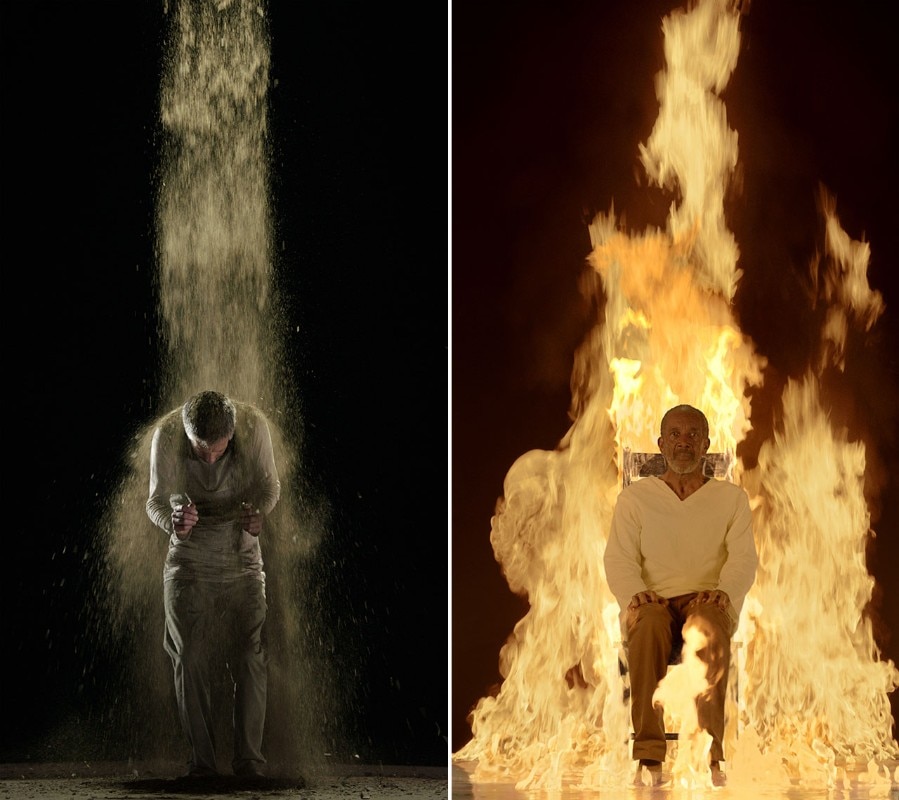
One of your most recent works Martyrs was, by contrast, created for St Paul’s Cathedral in London. It is the first video work permanently installed in an English cathedral and is also the work that ends the exhibition.
That project took me a long time. It is one of the rare cases in which I have been given the subject. Actually, if the Martyrs were not written on the plaque, it could be something else. The real protagonists are the elements, the strongest forces in nature, totally uncontrollable and indomitable. In the several scenes, people suffer earth, air, fire and water without rebelling and in a state of abandon. It is a way of saying we cannot fight death but must intimately accept that it will come to all of us.


